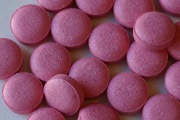
Misuse of prescription opioids is the fastest growing drug problem in the United States. And it will only get worse unless the population, especially youth, realizes that nonmedical use of these potent pain relievers is uncool and dangerous.
A common misconception is that these substances are safe because they are prescribed by physicians and dispensed through pharmacies. Drug buyers can indeed be more confident of the “product” when it’s a trademarked tablet rather than white powder in a plastic bag. A 26-year-old said, “My drug of choice is pharmaceutical heroin.” But, just like heroin, these trademarked substances present the same deadly dangers of overdose and addiction. And buying, selling, or giving away these substances is against the law—even if they were prescribed for you.
The Centers for Disease Control and Prevention (CDC) reports 100 people die from drug overdoses every day in the United States. The CDC also says drug overdose death rates have more than tripled since 1990, and opioid pain relievers cause nearly 3 out of 4 prescription overdose deaths including 14,800 in 2008 (CDC).
Too much of any opioid stops your breathing. Your grandfather may not be danger because he is tolerant to the amount he takes every day. Or he may be at little risk because he takes a single pill once in a while. But if you take lots of your grandfather’s opioid to get high, and you take it all at once or combine it with other sedating substances such as alcohol or benzodiazepines (Valium, Klonopin, Xanax, Ativan, and others), you put your life on the line! Mix drugs, and you can’t predict when each will exert its maximum effect on your drive to breathe. If some “peak” simultaneously, you’re in trouble. Regarding overdose risk, even the stimulant cocaine can worsen respiratory depression.
Then there’s addiction. Like all addictive chemicals, opioids are self-reinforcing. They massage the pleasure pathway in the brain, telling the user to “take me again.” Reinforcement is especially strong when a drug hits the brain rapidly because it was sniffed, injected, or smoked. Individuals consuming opioid pain relievers “socially” or “recreationally” can become physically dependent in as little as two weeks. Then they get sick if they stop using. Opioids relieve pain, calm people, put them to sleep, and make them constipated. Physical withdrawal is the opposite: people are aching, irritable, awake, and running to the bathroom. And addiction is much more and much worse than physical dependence. The patient who said, “Any addict knows, you’ll do anything to get it” understood people will do otherwise unthinkable things to maintain a drug habit.
We can reduce demand for misuse of prescription opioids with better access to treatment for people who are dependent on opioids and better preventive education for people who aren’t. Two problems: states already spend so much on treatment that they want to cut back; and, are there prevention educators with sufficient credibility and proximity to 15-year-olds to actually be heard?
For additional information: NCADD prescription drugs, and PubMed.
